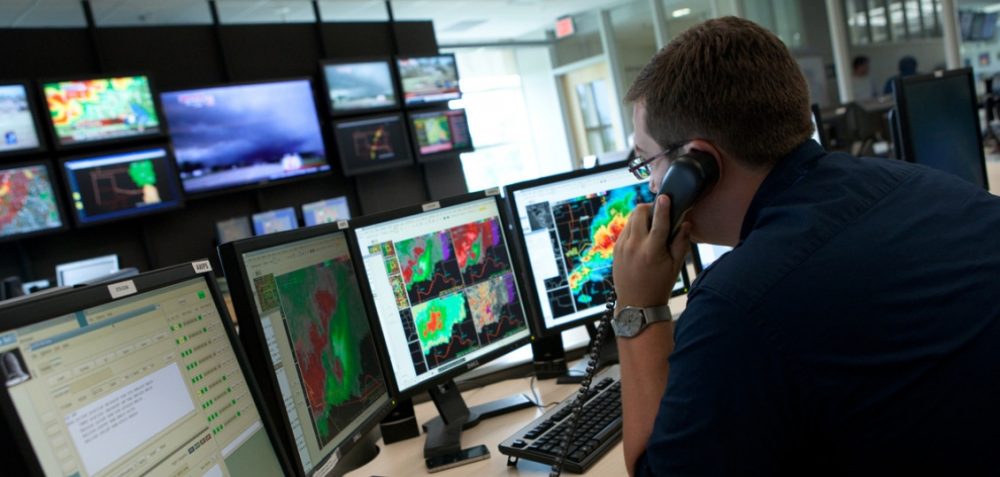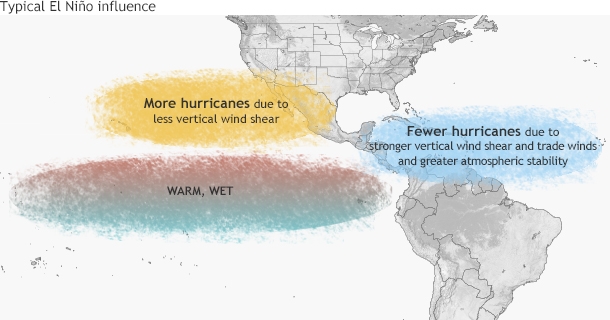What the Government Shutdown Really Means to Disasters
One aspect of my job is to report on disasters of all kinds here in the U.S. and across the globe – tracking severity and sharing how people are responding. It’s a job that’s has gotten a lot tougher over the last few weeks as the current shutdown affects about 25 percent of federal spending. […]

One aspect of my job is to report on disasters of all kinds here in the U.S. and across the globe – tracking severity and sharing how people are responding. It’s a job that’s has gotten a lot tougher over the last few weeks as the current shutdown affects about 25 percent of federal spending. We are starting to hear more about the effect on the 800,000 federal workers – many of whom are working without pay. We’re also trying to learn what the prolonged shutdown may mean for disaster-affected communities, now and in the future. Here are some of the implications we are aware of; we know there are many more. Please join the conversation on Facebook and Twitter and let us know how it’s affecting you.
U.S. Geological Survey (USGS) Less than one percent of their staff are continuing to work during the shutdown. It has 450 employees who can be called back in if there is a disaster; current staff are working to ensure that scientific experiments that will be severely impacted by the shutdown can continue. As a result, after the Anak Krakatau eruption and Sunda Strait tsunami in December 2018, no information was released publicly from USGS about the volcano eruption and tsunami. This information shortage applies to many of their other products. Their website states, “due to a lapse in appropriations, the majority of USGS websites may not be up to date and may not reflect current conditions. Websites displaying real-time data, such as Earthquake and Water and information needed for public health and safety will be updated with limited support.”
A recent NPR story shared that hurricane season forecasting improvements and modeling occurs in the off season but since the National Hurricane Center is currently working without pay, they are only carrying out basic day-to-day operations. Their partners at the Hurricane Research Center in Miami and Environmental Modeling Center in Maryland are furloughed. Work upgrading National Oceanic and Atmospheric Administration’s (NOAA) weather prediction model has been on hold. NOAA was intending to improve the Global Forecasting System (GFS) model in time for this hurricane season and that may not happen now. The GFS is falling behind other worldwide prediction models in terms of accuracy. The ability to forecast hurricane impacts for the upcoming season has also been affected.
The Federal Emergency Management Agency (FEMA) was already understaffed even before the shutdown due to the high level of recent, complex disasters in the U.S., particularly hurricanes and forest fires. These staff shortages led the Government Accountability Office to conclude in a Sept. 2018 report that a significant percentage of the workforce has been forced to work in positions that they haven’t been fully trained to carry out. The government shutdown means that this will likely be exacerbated. It is also likely that workers, especially younger and newer workers, will begin looking for work. This will mean the need to focus on new hiring and training, while also trying to get back up and running, once the shutdown ends. The shadow of the shutdown may make it more difficult for them to recruit qualified candidates who may fear another shutdown.
While some FEMA workers currently undertaking hurricane and forest fire response will continue to get paid, the majority (15,208) of FEMA’s 19,631 workers are working without pay. Those that are furloughed however, are often the staff that carry out planning, design policies and issue approvals for different programs, meaning this work will be slowed or will not take place. This will have a significant impact on programs such as disaster case management. FEMA temporarily stopped issuing flood insurance policies, but that decision was overturned a few days after the shutdown began. Although FEMA’s website at FEMA.gov is not being updated, it is important to note that DisasterAssistance.gov which allows individuals to apply for FEMA assistance is operational.
While FEMA staff are working (without pay), contractors have been ordered to stop work on their contracts. This includes disaster planning working, flood mapping and facilities management. Also halted were FEMA’s contracts with three mobile home manufacturers; buildings often used for post-disaster housing.
FEMA classes have been canceled including courses that help emergency managers and meteorologists prepare for and better understand the work of the National Hurricane Center, flood outlook and predictions; all information that guides decision-making. National Weather Service public training, such as spotter training, has also been canceled.
FEMA is part of the U.S. Department of Homeland Security (DHS) which oversees many government departments. The U.S Coast Guard falls under DHS so they missed their last pay check; the first time in history a military department was not funded during a shutdown.
National Parks are open but mostly unstaffed. Litter is not being picked up, visitor centers are closed, animal tracking and monitoring is not taking place, safety precautions and rescues are limited. In Joshua Tree National Park, some of the protected Joshua Trees were even cut down. Severe environmental damage is being seen in many parks and it may take years for them to recover, if they ever do. Forest maintenance activities which help prevent fires will not be carried out. The damage to national parks could result in increased forest fires next year, loss of species and other environmental damage.
United States Department of Agriculture has limited funding for food stamps and nutrition assistance programs. Many states are issuing February’s allotments during January to ensure recipients get their financial support. This has impacts too as low-income families who are already food insecure now need to stretch their food stamps longer. It is unknown whether food stamps will be available in March if the shutdown extends. For families recovering from one of the many disasters across the country who lost their employment and are now reliant on government support, this is another kind of disaster.
Food and Drug Administration (FDA) is bringing back 400 inspectors and support staff in order to ensure high-risk facilities are inspected during the shutdown. These employees will not be paid. There was concern, especially in light of the recent romaine lettuce contamination, that unsafe products would make it to market causing harm to consumers.
Since we at CDP focus on vulnerable communities in our work, I want to end by taking a look at the human impacts. The shutdown is affecting about 1.3 million workers. Of these, 800,000 are federal employees and 500,000 are contractors. The federal employees can be divided into two groups: furloughed employees who are off work and not getting paid (this is about 380,000 people) and about 420,000 who are required to still come to work but are not getting paid. Federal employees will get back pay when the government resumes; contractors likely will not.
About 80 percent of all American families live paycheck to paycheck. Government employees, especially younger and newer staff, are no different. Weeks of not getting paid will have significant financial effects. The median salary for government workers is $77,000 but one-fifth make less than $50,000. That means that in week four, many have missed as much as $5,000 in salary.
Following disasters, we usually see an increase in substance use, depression and anxiety, family violence and family breakdowns. Much of this stems from the financial stress that arises. Like a disaster, a shutdown has the same potential for increased vulnerability due to financial impacts. This is particularly true for the lowest paid employees, people with disabilities, single income earners and other previously vulnerable populations. As payments get missed for mortgage or rent payments, homelessness becomes a possibility, as does an increase in food bank usage. As utility payments, credit cards, car loans or other debt payments are missed, arrears will be assessed, and loss of the asset is possible. Long term this will affect credit scores and can result in denied loans and higher interest payments down the road creating further vulnerabilities.
These are concerning times for us all as we are moving into unchartered territory of the longest government shutdown in history. Let us be vigilant in supporting organizations, like food pantries, faith groups, restaurants, financial institutions, hair salons and many others that are stepping in to fill the gaps and support the unpaid employees. We appreciate those that are continuing to work and serve the people of this country, despite the current circumstances under which they are working.
More like this

